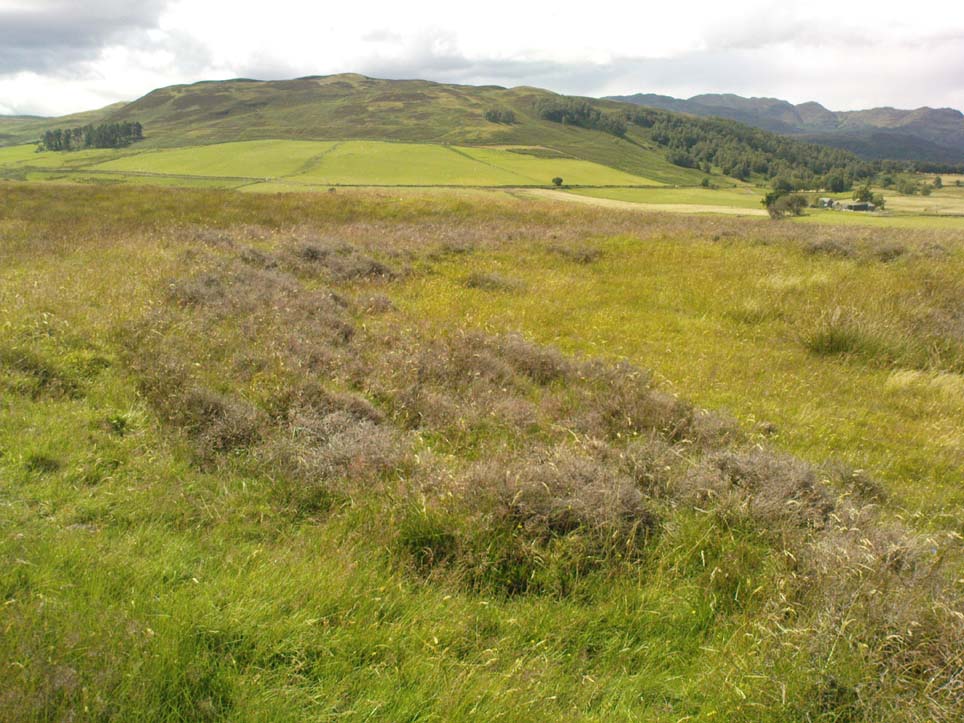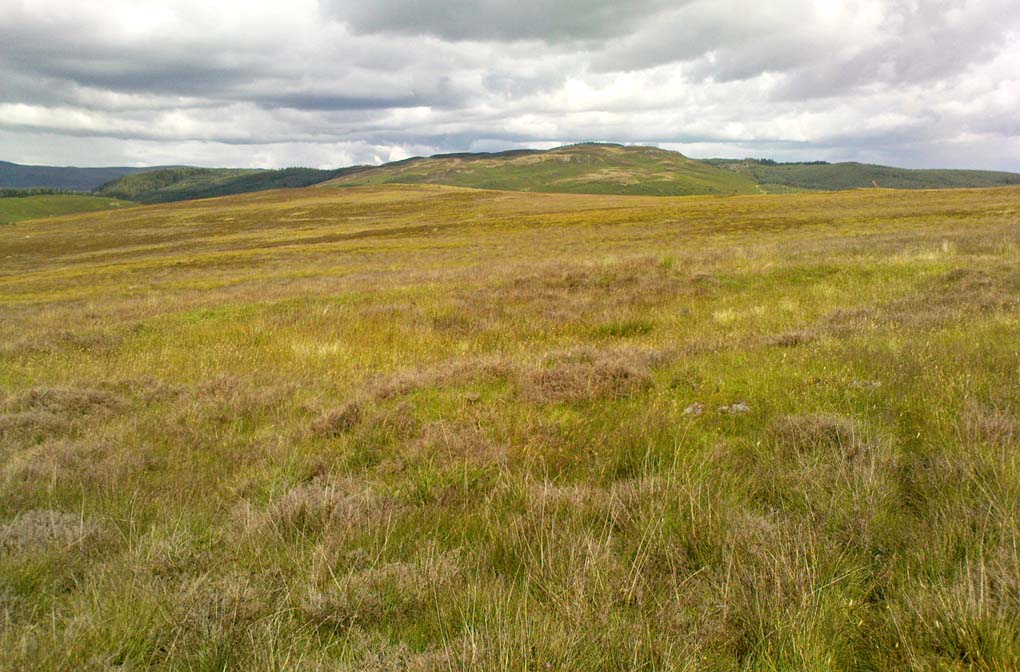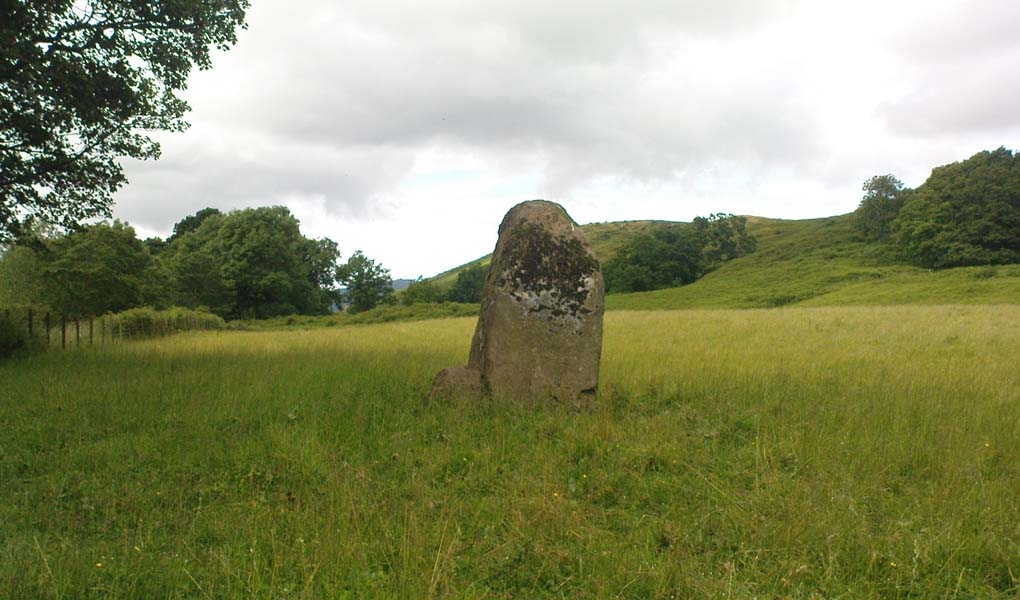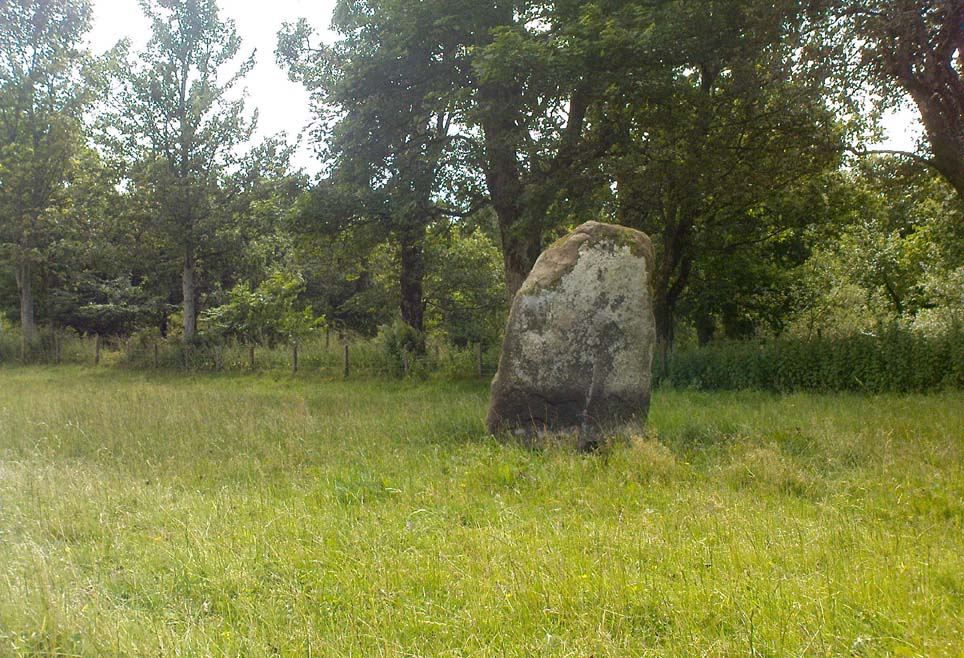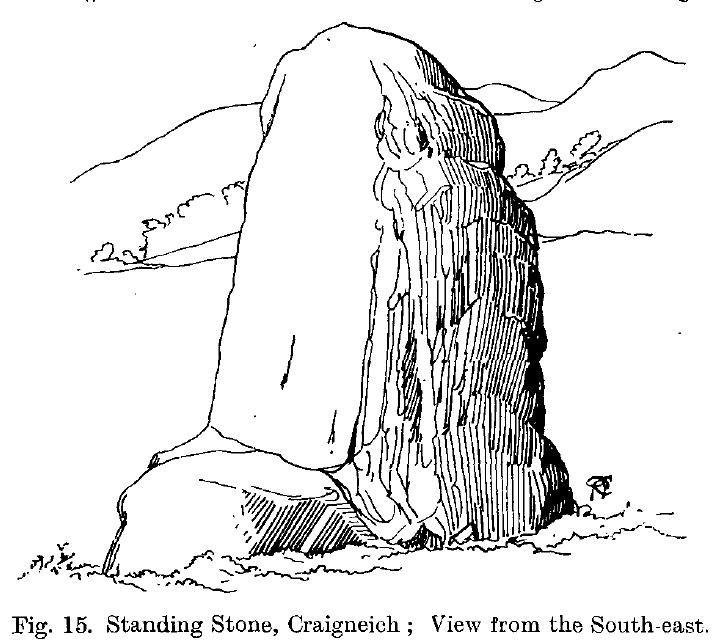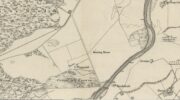Cup-Marked Stone: OS Grid Reference – NN 7936 1739 *
Also Known as:
- Aodann Mhor
- Dunruchan

We parked-up by the small trackway into the fields on the opposite side of the road 100 yards short of Craigneich across from the standing stone, then walked up the track, thru the gate, then walked uphill. Tis boggy & bumpy as you’d expect – and then, as you espy the giant standing stones of Dunruchan on the ridges above, watch out for the large rounded boulder (amongst many) as you near the level 100 yards or so before the magnificent Dunruchan A stone. Look around!
Archaeology & History
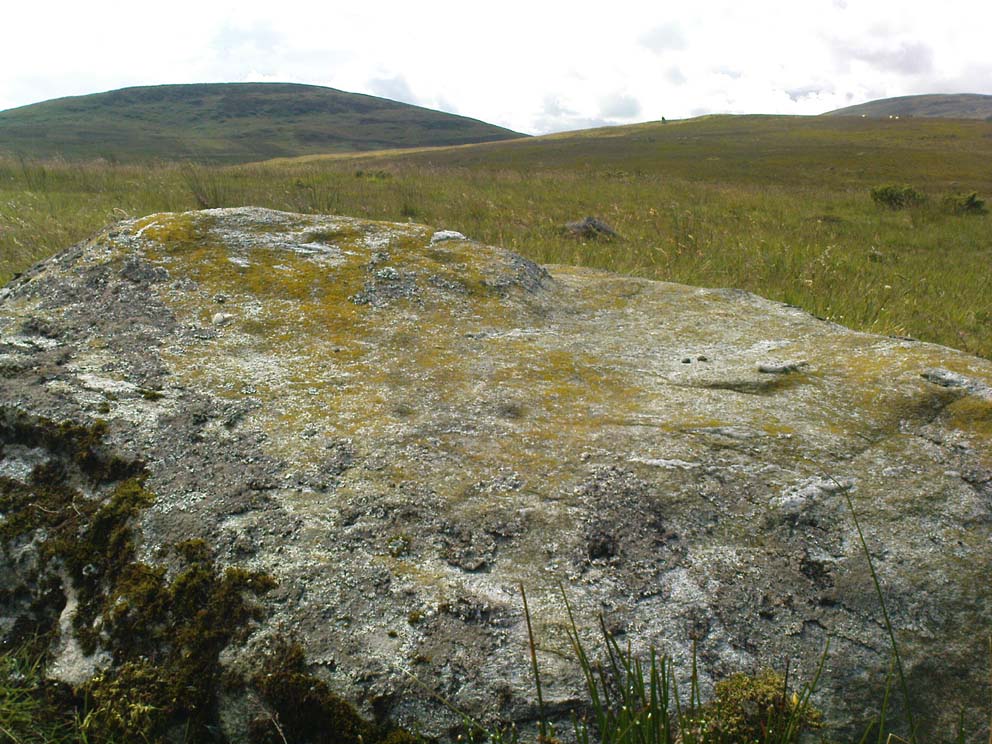
Not far from the cup-marked stones of Blar an Rodhar is what appears to be another such carving. Here, two archetypal cup-marks are clearly visible on one of the large rocks on the slope up to the huge standing stone of Dunruchan A. There may be other faint cup-marks on this boulder, but the light wasn’t too good when we first found this, so I’m not sure about any others. The main two however, as the photo shows, stand out! A grassy overgrown cairn is some 10 yards away to the east, almost in line with the largest Dunruchan Stone. The Dunruchan C standing stone is also clearly visible on the skyline to the west, leaning at an angle. Many other small cairns are scattered on the grassy plain where this cup-marked stone rests. The carving is not included on Canmore’s website, so this could be another new find. However, the rock up here aint what I’m used to – so if any local geologists or antiquarians can show me it’s Nature’s handiwork, please lemme know and I’ll delete it from the website.
* Grid-ref may need revising, as we went out without mapping instruments. If someone gets a better coordinate, please send it in.
© Paul Bennett, The Northern Antiquarian
The map could not be loaded. Please contact the site owner.
